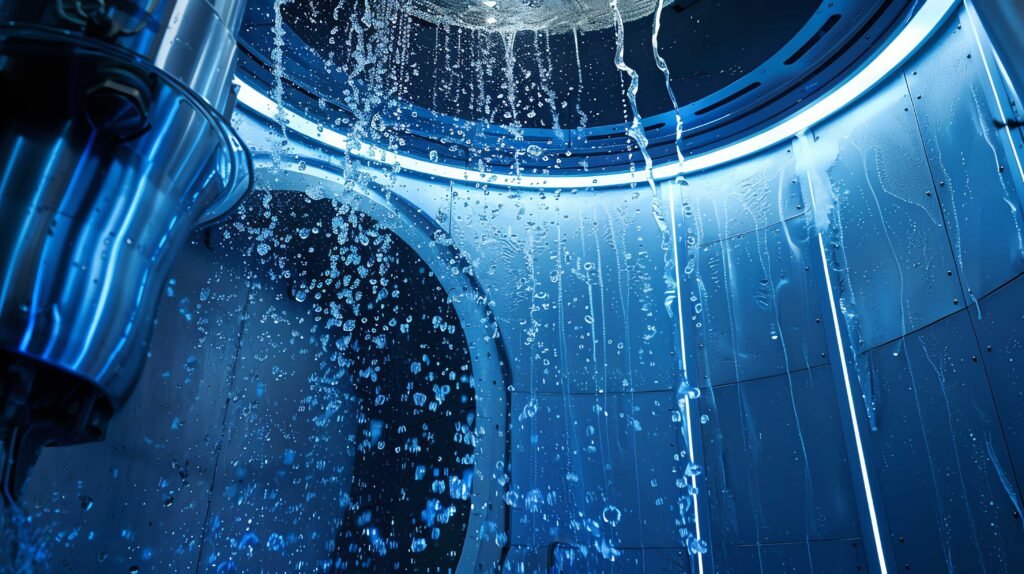The basic act of flushing a toilet when is the most recent time it struck your mind? Although it might seem like a little thing to do, the technology that allows it greatly influences our world and the way we live our lives. Plumbing professionals individuals and environmental activists all need a firm grasp of Flushing Technology Types Discover Future of Toilet Technology as preserving water takes center stage.
Learn how flushing technology evolved through the years, and how it has boosted water efficiency and promoted water conservation in this interesting blog post. You will learn about the development of toilet technology, from its traditional roots to its cutting edge smart advances, and how it will affect our environmentally friendly way of life.
The Importance of Flushing Technology in Modern Plumbing
Modern plumbing systems depend much on flushing technology. It’s not only about clearing trash water management depends critically on it. Given the growing worry about water shortage, effective flushing systems can significantly impact.
Often using up to 3.5 gallons per flush, traditional toilets can soon mount up. By contrast, advanced technologies aim to reduce this amount significantly. We can save resources and lower water bills by raising toilet water use efficiency.
Maintaining knowledge of these developments guarantees that plumbing systems are both ecologically friendly and efficient for homes and businesses. This information enables better decisions for maintenance, improvements, and installs.
Traditional Flushing Mechanisms and Their Drawbacks
Most conventional toilets rely on gravity Flushing Technology Types Discover Future of Toilet Technology, which waste removal depends on the water pressure of the tank. While effective, these systems often use a substantial amount of water per flush. In older models, this can range from 5 to 7 gallons, leading to excessive water use.
These systems also present issues with efficiency. Clogs and incomplete flushing are common problems, requiring extra flushes and wasting even more water. Moreover, the wear and tear on plumbing fixtures might raise maintenance expenses and requirements.
Given these shortcomings, flushing technology has seen more innovation pushed for. Newer designs try to solve these problems by best using water without compromising dependability or performance.
The Rise of Dual Flush Toilets
Enter dual flush toilets a game changer in water conservation. These systems offer users the choice between a low volume flush for liquid waste and a full volume flush for solids. Over time, this adaptability helps to save a lot of water.
Usually for a liquid flush, dual flush toilets run 0.8 to 1.2 gallons for a solid flush, they run up to 1.6 gallons. This reduction can save thousands of gallons per household each year. With such benefits, it’s no wonder they’re gaining popularity in environmentally conscious homes.
Installation and retrofitting are straightforward, making dual-flush systems an accessible upgrade for many. Households that make the switch often notice immediate reductions in their water bills, proving the practical benefits of this innovative system.
Pressure Assist Systems Leading the Charge
Pressure assist flushing systems are another innovative solution for efficient toilets. These systems use compressed air to create a powerful flush using less water. They are particularly effective in settings where a robust flush is needed, such as commercial spaces.
Pressure assist toilets need less regular maintenance and are less likely than gravity fed ones to cause clogs. Homeowners value the systems efficiency in water conservation as well as great performance.
For more efficiency, some consumers are ready to trade off these systems noise level relative to conventional toilets. Overall, pressure assist systems represent a significant step forward in modern toilet technology.
Smart Flushing Technology Transforming the Bathroom Experience
Smart technology is invading toilets as well as phones and homes nowadays. Advanced sensors and connection combined in smart flushing systems help to maximize water utilization and improve user experience.
These systems can adjust flush volumes based on real time usage data, reducing water consumption even further. Some types provide leak detection and self cleaning capabilities, therefore enhancing bathroom convenience and efficiency.
Not only is adding smart technology into toilets about luxury, but it also helps to create a more environmentally friendly and effective house. These technologies enable consumers to make wise judgments regarding their water consumption by offering understanding of it.
Real World Impact of Advanced Flushing Technology
Case studies highlight the tangible benefits of adopting advanced Flushing Technology Types Discover Future of Toilet Technology. A family in San Francisco replaced conventional toilets with dual flush versions and noticed a 25% water bill drop. The environmental advantages of this shift also show in an annual water save of about 10,000 gallons.
A little office building converted to pressure assist systems in Chicago saved more than 200,000 gallons a year. This move not only cut costs but also improved restroom hygiene and user satisfaction.
Meanwhile, in Austin, a university dormitory installed smart flushing systems, resulting in savings of $15,000 on water bills annually. The smart systems also helped identify leaks early, reducing maintenance requirements and enhancing water management efficiency across the campus.
Practical Tips for Installing Modern Flushing Systems
There are doable actions to guarantee a good installation for individuals thinking about modernizing their toilets. See a professional plumber first to evaluate your present plumbing system and decide on the appropriate flushing technology for your requirements.
Consider the layout and limitations of your bathroom space. While dual-flush and pressure-assist systems are compatible with most setups, smart systems may require additional electrical work or Wi-Fi connectivity.
Long-term efficiency depends mostly on routine maintenance following installation. Look for leaks or strange flushing behavior; these can point to problems needing attention. Routine inspections optimize water savings and make your new system last.
The Future of Flushing Technology Innovations
Flushing technology has a promising future marked with fascinating advances just ahead. Researchers are looking at even more effective technologies that cut water use without sacrificing functionality.
Improvements in materials and design will open the path for simpler maintenance and cleaning of toilets. Additionally, increased integration of IoT technology promises even smarter, more connected bathroom experiences.
For environmentalists, these innovations align with global efforts to conserve resources and promote sustainability. The future is not only about saving water but also about creating smarter, more adaptive environments.
Summing Up The Importance of Advanced Flushing Technology
In conclusion, advancing toilet technology represents a critical opportunity for water conservation and efficiency improvements in households and businesses alike. Modern systems including dual-flush, pressure-assist, and smart technologies let consumers drastically lower their water expenditures and environmental impact.
For environmentalists, homeowners, and plumbers, these developments provide doable ways for sustainable living. Choosing to upgrade is about helping to create a more sustainable future for all, not only about quick advantages.
Should you have knowledge of these technologies, we would be happy to hear about them. Comments section below allows you to share your stories and observations. Your opinions can enable others decide on their future bathroom remodel with knowledge.
Frequently Asked Questions
Q: What are dual-flush systems, and how do they save water?
Two flushing choices a low volume flush for liquid waste and a full volume flush for solid waste are offered by dual flush systems. By letting customers select the right amount of water required, this adaptability can greatly lower water consumption and hence minimize waste.
Q: Are pressure assist systems suitable for residential use?
A: Yes, pressure assist systems can be installed in homes, though they are particularly beneficial in settings requiring powerful flushes, like commercial spaces. They offer robust performance and water saving benefits but might be noisier than traditional toilets.
Q: How do smart flushing systems work?
A: Smart flushing systems utilize advanced sensors and connectivity to optimize water usage. Based on real time data, they change flush volumes and can incorporate leak detection and self-cleaning technologies, therefore optimizing bathroom use and convenience.
Q: What should be considered before installing a smart toilet?
A: Think about the layout of your bathroom and any other needs like Wi-Fi access or electrical work before putting in a smart toilet. Consulting with a professional plumber is also advisable to assess compatibility and system setup.
Q: Can modern flushing technologies be integrated into older homes?
A: Yes, many modern Flushing Technology Types Discover Future of Toilet Technology can be integrated into older homes. Some improvements, meanwhile, can call for changes to electrical or plumbing infrastructure. Professional work guarantees a flawless installation process.
Q: What are the long term benefits of upgrading to advanced flushing systems?
Advanced flushing systems can provide significant water and cost savings, better bathroom efficiency, and a smaller environmental impact. Features of these systems improve ease and hygiene over time, hence extending their lifetime.


